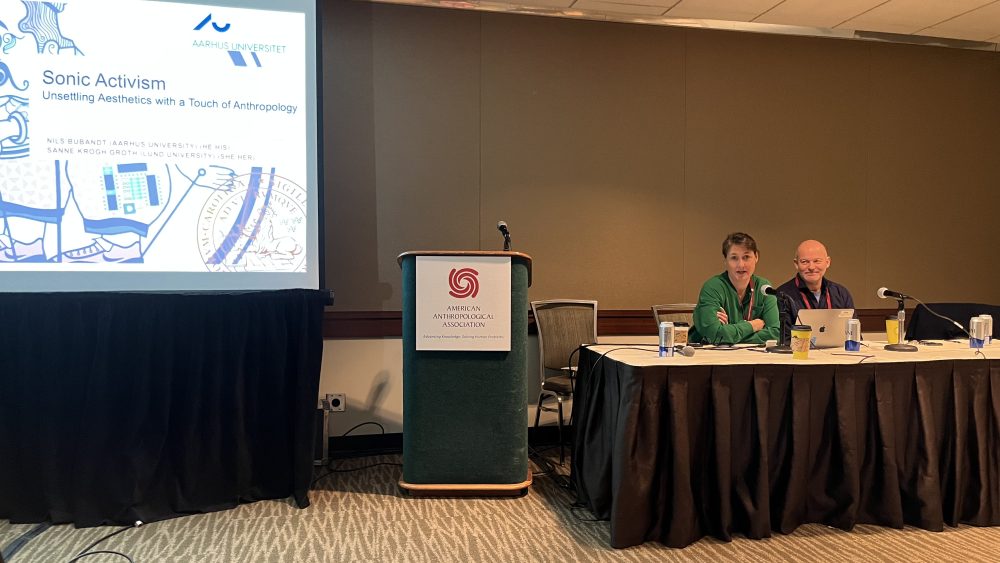At the American Anthropological Association (AAA) meeting in Seattle, USA in November 2022, we presented some of the preliminary findings of our research into contemporary electronic music in Indonesia in a paper entitled “Sonic Activism: Unsettling Aesthetics with a Touch of Anthropology”.
The paper explored the ethnographic and aesthetic puzzle at the heart of our project: if noise music on the North Atlantic Rim emerged as a form of protest against an aesthetics of silence and the hegemony of rhythmic and tonal music, what is the aesthetic and political appeal of noise music in Indonesia, a place where pentatonic, polyrhythmic music is considered high taste and where noise – in its broadest sense – is rarely considered disruptive?
To address this puzzle, we discussed two analytical concepts that form the basis of two parallel research articles on which we currently work: transposition and equivocation.
In conventional music theory, the term transposition refers to the notation or performance of music in a different pitch. But its range of meanings is much more comprehensive. In biology, transposition refers to the horizontal transfer of genetic material that happens in bacterial worlds. In chess, it refers to the alternative set of moves through which one can get to the same position. And in magic, transposition refers to the sleight -of-hand through which a performer switches one object for another. Deleuze and Guattari described the synthesizer as a transposition machine: a thought machine that works like philosophy: an assemblage that enables thought to travel. We are inspired by these multiple meanings to use the term “transposition” as a way to rethink aesthetic globalisation in a digitised and mediated world.
Equivocation is a term we borrow from Brazilian anthropologist, Eduardo Vivieros de Castro, and apply to noise music. Vivieros de Castro used the perspectivism of his Amerindian interlocutors to propose equivocation as an analytical alternative to comparison in anthropology. Whereas comparison is based on the idea that different people see the same thing in different ways, equivocation opens up the possibility a perspectivism in which different things are seen in the same way. What happens, we ask, if we do not assume that noise music is one universal phenomenon but multiple phenomena, the appear the same, only if one ignores the different worlds of sound, music practices and aesthetics out of which they emerge? Giving up on the certainty of noise as one ideal and universal phenomenon is for us a way of abandoning the questionable universal aesthetics inherent in Western art music. Noise music in an equivocal optic is not a response to a universal aesthetic but rather an “aesthetic multiple”.

